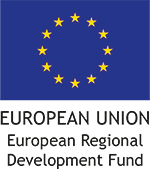..was the second track in Gorillaz highly acclaimed concept album “Plastic Beach”, created by Damon Albarn and Jamie Hewlett back in 2010. The album was probably one of the first to address the issue of plastic litter on our coasts, although delicately, with hints of subtle environmentalism hidden in a package of popular music. Seven years have gone quickly since the release, but we’re yet to discover the magnitude of the issue in its entirety.
Today, we are constantly reminded about our actions in the sea, with evidence of the poor conditions of our water ecosystems piling up. The newest problem was widely covered by The Guardian, about how sea-salt all over the world is contaminated by plastics. We had barely recovered from the previous news about how billions of people are drinking plastic contaminated tap-water.
With so many scares, the most frightening thing still seems to be our ignorance of addressing the problem at an everyday level. Numbness, due to the overwhelming amount of problems we face today, is quite understandable with everything going on in the world. Nothing seems to chock people anymore. How can one be bothered by anything when you’ve already seen everything?
Fortunately, environmental awareness is the word of the decade and we have only started to venture the possibilities to activate entire generations towards sustainability. Young people, such as myself, are generally concerned about global issues in the environment.
With more media coverage on subjects such as global warming and marine littering, trends in consumption seem to shift, yet slowly, towards a more sustainable direction. Even the great Sir David Attenborough mentioned in an recent interview, that he is more encouraged by the future of the planet than before, due to a change in general attitude. Yet, the real puzzle is to connect global issues with local efforts, in other words; How do we get people to understand that everyday actions, even small, count? How do we turn attitude into action?
As I recently started at the BLASTIC -project group, these were some of the questions I wrapped my head around, not because they serve a special agenda in my part, but because these are the ones that personally concern me the most.
I can’t say I’ve come up with any solutions (yet) than the most evident one: we’ll have to start somewhere, anywhere really, because the world won’t wait.
We at BLASTIC will do our very best to research, raise awareness, and most importantly, educate how to apply solutions at the root level. As the newest member in our group, I wish everyone to be pro-active and to keep up a positive attitude, for there is no room for gloom in solving the problems of the natural world.
As attitudes have changed quickly regarding the importance of conservation of the natural world, now is the best time to make a difference for generations to come!

